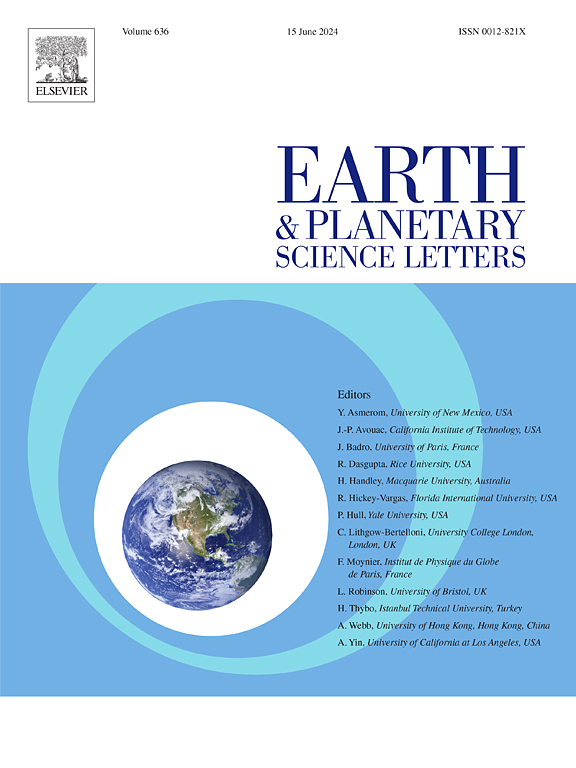Thin basaltic regolith at the Chang'e-6 landing site
IF 4.8
1区 地球科学
Q1 GEOCHEMISTRY & GEOPHYSICS
引用次数: 0
Abstract
The Chang'e-6 (CE6) mission is the first probe that has returned samples from the lunar farside. The sampling site is located on the southern mare basalt within the Apollo peak-ring impact basin. The Apollo basin itself lies within the clearly-recognized, largest and oldest South Pole–Aitken (SPA) basin on the Moon. Samples from the SPA are believed to be of great implications for multiple critical lunar science questions, such as impact chronology, impact basin formation processes, as well as stratigraphy and composition of lunar lower crust/upper mantle. Using available data sets from previous lunar missions, this study proposes a subsurface stratigraphy for the CE6 landing area based on crater morphologies and their excavation depths. The result revealed the thickness of the basaltic regolith at CE6 landing site is as thin as ∼1.6 m. Compositional data suggested the basalt-dominant samples (Mg#: ∼40) actually contain both intermediate-Ti (∼5.6 wt.% TiO2) and low-Ti (∼3.3 wt.% TiO2) basalts, with exotic Mg-suite clasts (Mg#: ∼70) as ejecta mainly from craters inside the Apollo basin. The remotely sensed compositional signatures indicated that the CE6 probe had sampled KREEP (an acronym for potassium, rare earth elements, and phosphorus)-poor (Th: ∼2 ppm) high-Al (∼14 wt. % Al2O3) materials. Since the mare basalts were products of thermal evolution and partial melting of the mantle, they are appropriate agents to study lunar farside thermal and geochemical evolution, and examine the nearside-farside crustal and volcanic dichotomies. Given that the sampling site is located in the margin of the proposed SPA transient cavity and melt pool, the exotic Mg-suite clasts in the CE6 samples may represent shallower crustal materials, which have the potential to provide valuable insights into lunar crustal composition and stratigraphy.
求助全文
约1分钟内获得全文
求助全文
来源期刊

Earth and Planetary Science Letters
地学-地球化学与地球物理
CiteScore
10.30
自引率
5.70%
发文量
475
审稿时长
2.8 months
期刊介绍:
Earth and Planetary Science Letters (EPSL) is a leading journal for researchers across the entire Earth and planetary sciences community. It publishes concise, exciting, high-impact articles ("Letters") of broad interest. Its focus is on physical and chemical processes, the evolution and general properties of the Earth and planets - from their deep interiors to their atmospheres. EPSL also includes a Frontiers section, featuring invited high-profile synthesis articles by leading experts on timely topics to bring cutting-edge research to the wider community.
 求助内容:
求助内容: 应助结果提醒方式:
应助结果提醒方式:


